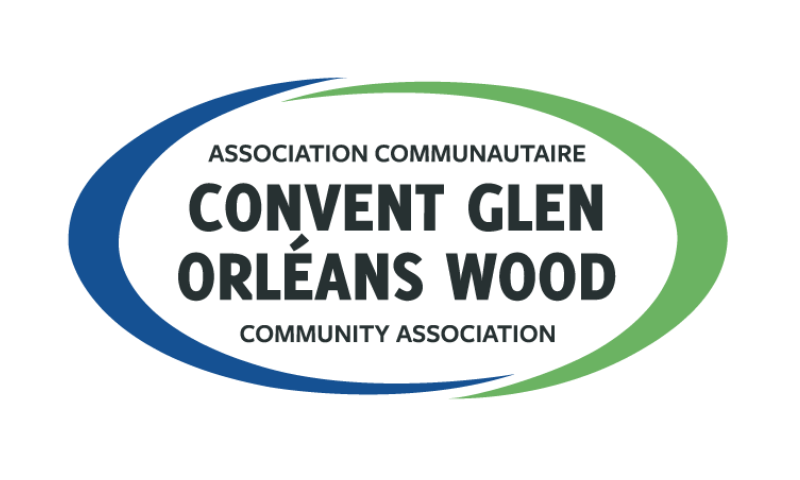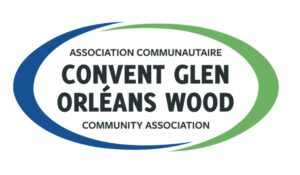
I am currently in the process of reviewing the 2nd draft of the zoning bylaw that just got published, and I felt the need to do something fun like writing an article for the newsletter instead because zoning is REALLY boring. One concept that comes up a lot in zoning discussions is the concept of neighbourhood character. This has led me to think about the neighbourhood character of Convent Glen Orléans Wood and how that relates to zoning. To me, neighbourhood character is about people. To maintain neighbourhood character, we need to ensure that people who live in the community can remain in the community while maintaining what makes the community special.
Demographics
Let’s start with the people of Convent Glen Orléans Wood. I propose that the two major factors that influence the ability of people to stay in the neighbourhood are age and socio-economics.
Looking at the data from the Ottawa Neighbourhood Study, it is interesting to see that we are the Orléans neighbourhood with the highest percentage of people over 65, at 24.2%. We also have an average percentage of children at 15.5%, a low percentage of youth at 10.5%, and a median age of 46, which is old but not very high compared to some other neighbourhoods. The data is pretty much in line with my observations. We have a lot of retirement residences that skew the age up a bit, but I see on my street a lot of older couples whose children have left the house but have not downsized. We also have more young families than families with older children.
The neighbourhood was populated in the 1970s and 1980s. I assume that it started the same way as some of the younger neighbourhoods today, with younger families. The kids in those families grew up and left while the parents stayed.
If we want to preserve the character of the neighbourhood, I think it’s important to allow the people who live in the neighbourhood to stay in the neighbourhood. The fact that we have a lot of old couples and young families in our neighbourhood suggests that we have failed to do so. We need to provide more opportunities for older couples to downsize and make room for their children if they want to stay. We also need to provide housing options for those who fail to have as much economic success as their parents.
Socio-economics
The socio-economic picture is interesting. The average household income of our neighbourhood ($103,400) is lower than others in Orléans, which I would have thought to be similar, such as Châteauneuf ($112,600). However, looking at the average after-tax income of all couple-with-children families, we are closer to other neighbourhoods in Orléans at $139,000, which is similar to the same data for all of Ottawa, which is $137,000. I think this is a case where older people may skew the results. Families in our neighbourhood are middle class, but households without children tend to have lower incomes than the average. This makes sense, considering the high number of older households living off pensions, which would skew numbers lower.
My conclusion is that our neighbourhood is average so the neighbourhood character should reflect this. We currently have a wide range of housing, from single-family homes to apartment buildings. With the LRT, there is a good chance that home prices will go up since accessing downtown will hopefully get a lot easier (I maintain the hopes that we will sort out the LRT and that one day it will be fast and reliable). If we want to maintain the neighbourhood’s character, we need to keep our neighbourhood affordable as we get upward price pressures. This means providing more housing options at various price points.
I think it is reasonable to expect that we will need to see a change in expectations concerning housing. Families who have income levels that would historically be able to afford single-family homes would have to live in a townhouse or even an apartment. This is because we are starting to realize that urban sprawl is financially not sustainable and we will need to put more people in the same area. However, I don’t think this means that we need to lower our quality of life since an increase in amenities (third places, parks, etc.) in the area would mean a lesser need for personal space (e.g. no need for a man cave).
Built Environment
The environment, in my opinion, is what makes the neighbourhood special. One of the major factors that made us move here was access to the Ottawa River Pathway and the calm in our neighbourhood. I see more people walking and biking in my neighbourhood in one day than I saw in one year when I lived in Fallingbrook. Access to nature is a defining characteristic of our neighbourhood that needs to be maintained.
Another characteristic of our neighbourhood is the lack of big box stores. Growing up, I remember having the Canadian Tire on St. Joseph, but most big businesses have moved to Innes. This leaves us with a good opportunity to support smaller local companies, of which we have plenty. Unfortunately, most of our local businesses are located on St-Joseph. St-Joseph requires people to drive since the experience outside of a car is abysmal (inside the car, I think it is just awful). There is not a lot of difference between driving to St-Joseph compared to driving to Innes (from my place, it takes 7 minutes to drive to St-Hubert and 11 minutes to drive to Moxie’s). This means that small businesses need to compete on quality instead of being able to compete on accessibility or experience. If we want to support local businesses and integrate them into the character of our neighbourhood, we need to enable them to compete on more axes (another article in the future?). This means providing more customers within walking and biking distance, improving access by means other than a car and allowing them to provide a better experience beyond what a car sewer can provide.
In Conclusion
If we want to maintain the character of our neighbourhood, we need to maintain the following:
- Allow people living in our neighbourhood to stay in our neighbourhood
- Ensure that people don’t get priced out of our neighbourhood
- Maintain access to nature
- Enable small businesses
To do this, we need to provide more housing and more housing options so people can live in the neighbourhood regardless of their age and changes in socio-economic status. Given broader economic changes that means more density and lower price point options than are currently available. This will also help local small businesses by providing more customers.
We also need to increase our access to nature by investing in our parks and multi-use pathway network to ensure that they meet the demands that come with an increasing population. This probably means a separate bike trail to avoid conflict between pedestrians and cyclists along the Ottawa River Pathway, improvements in connectivity across the 174, and year-round access to our multi-use pathways.
Luckily, the Orléans Corridor Secondary Plan, as outlined in the study, does provide a good framework to make this a reality. My goal with the Convent Glen Orléans Wood Community Association is to make sure that it gets implemented. I want the character of our neighbourhood to be preserved, and the way to do this is to enable the changes that will allow it. This likely means bolder changes than are currently proposed in the current very milquetoast changes proposed for neighbourhood zones in the new zoning bylaw.














1 ping
[…] Maintaining Neighbourhood Character in a Time of Change […]